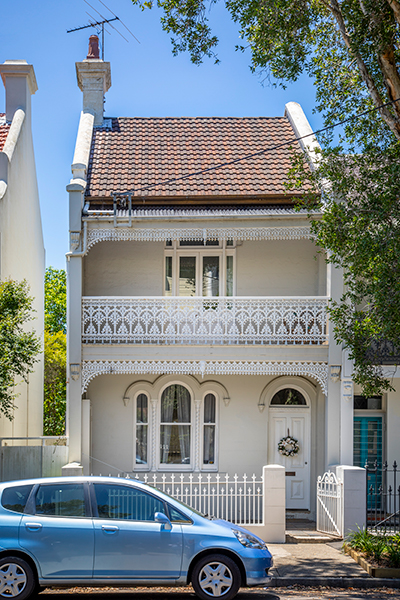Quick Read: Urban TippingPoints
A Sustainable House In The City
Sydney, Australia
A small urban family remodels its 100-year-old house to achieve water and energy self-sufficiency.

In 1996, Mike Mobbs, a Sydney environmental lawyer, and his lawyer wife, Heather Armstrong, set out to renovate their 100-year-old terrace house in the inner-city Sydney suburb of Chippendale. They wanted to expand their kitchen and make a bit more living space for their two kids.
But when they sat down to plan the job they decided to build a house that would be less of a drain on the planet's resources. With a bit of vision, some common sense, and a lot of tenacity, they built what most of us would think impossible... a house in the middle of Australia's biggest city that:
- Collects all its drinking water from the roof
- Generates all of its electricity from the sun
- Processes all of its wastewater, including sewage, on site.
Impossible? Outrageously expensive? Here's how they did it...
Mike wanted to collect all of the water the family needed off their roof. They had never been big water users. Even before they renovated, they used just 350 liters of water a day, or about half that of the average Sydney household. But over a year, this still adds up to around 100,000 liters of water.
The house is less than two kilometers from Sydney's central business district, sandwiched between two congested inner-city roads (Broadway and Cleveland St.) that are choked frequently with buses and cars. So with two young kids, Mike and Heather were initially concerned about the quality of the water they'd collect off their roof. They were pleasantly surprised. Today, their drinking water is cleaner than that of most households. The water exiting the other end of the tank is clean enough to be reused in the house as grey water to flush toilets, wash clothes and water the garden, and any excess overflows into a dry reed bed.
Saving water for the planet. Saving money for the family.
The water recycling and sewerage disposal systems in the Chippendale house process around 100,000 liters of sewage each year, preventing it from entering the Pacific Ocean. The organic composting also cuts the local council's waste by several tons. The water recycling and sewage treatment system cost about $11,000, including all of the excavations and the tank, which has the capacity to process waste for nine people.
Annual savings on water and energy bills are around $1,600/yr. Taking into account extra maintenance and gas bills, that works out to an annual saving of about $1,200. The cost-benefit would be greater if neighbors started to use the house's organic waste disposal system, which still has extra capacity. Michael also estimates the sustainable building costs would be halved if built from scratch. For more details, click on the links here

